Maritime Aviation Correspondent David Billinge went aboard the new Royal Navy strike carrier HMS Prince of Wales during her visit to the Mersey. Here, he reports on the anticipated composition of the future air wing as a taster for the full-scale photo essay and report published in our May 2020 edition.
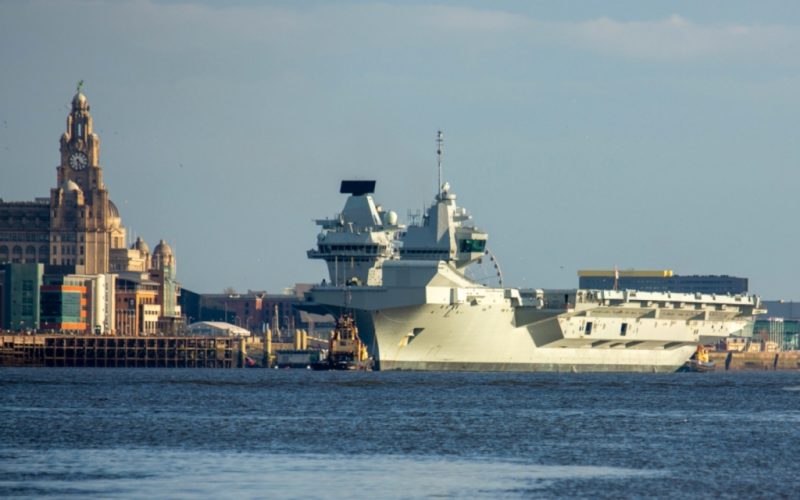
Photo: David Billinge.
The Mersey witnessed the massive 65,000 tonnes plus warship bringing with her key components of a likely future carrier air wing. Not only were visitors able to see the Merlin Mk2 Anti-submarine Warfare (ASW) helicopter but also Wildcat (surface attack, ASW, plus surveillance), a Royal Air Force (RAF) Chinook (heavy-lift) and Merlin Mk4 ‘Jungly’ (utility and troop transport) helicopters.
The ship’s visit even drew in the fixed-wing element, with an F-35B jet from 617 Squadron – the joint RAF/Fleet Air Arm (FAA) lead formation – flying over the carrier in farewell salute as Prince of Wales headed back out to sea. She was due to resume work-up ahead of the (then) planned Rotary Wing Embarkation and further sea trials.
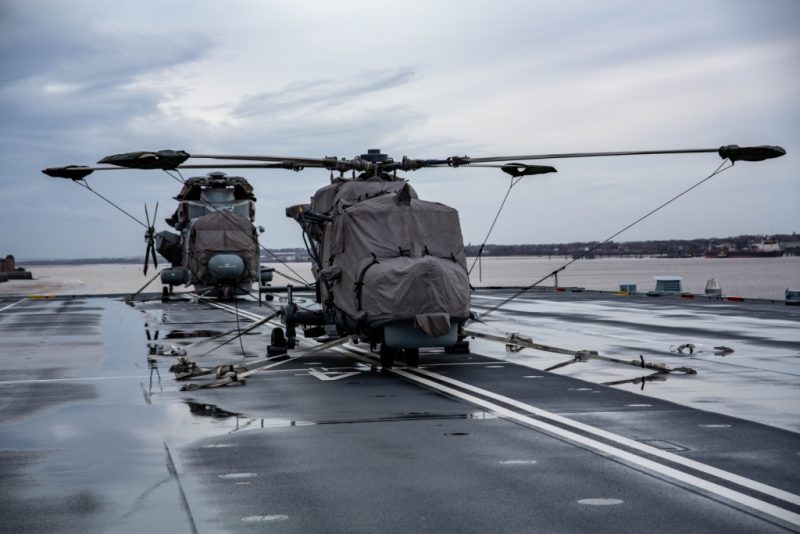
One helicopter not aboard Prince of Wales during her time on the Mersey was the Airborne Surveillance and Control (ASaC) variant of the Merlin. It has emerged that the Crowsnest project – which will integrate Searchwater 2000 radar and mission system into the Merlin HM Mk2, in a roll-on roll-off configuration – has suffered further delays.
It seems the Airborne Command and Control (ACC) component of lead carrier HMS Queen Elizabeth’s Tailored Air Group (TAG) will only be able to deliver an incremental capability by the time the long-anticipated 2021 first front line deployment begins. However, the impact of the COVID-19 pandemic may well delay that, so possibly Crowsnest will catch up before the ship sails for points East of Suez.

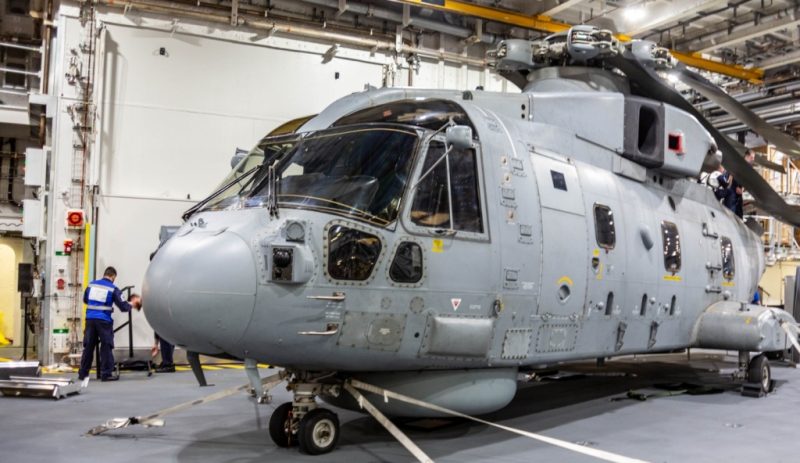
Prime contractor Lockheed Martin is taking a system with original parts from the Sea King ASaC Mk7 – some of which have also needed a firmware upgrade – and combining them with all new parts (the latter necessary because of obsolescence). At the time of the visit to the Mersey (early March) helicopter manufacturer Leonardo was in the process of converting all thirty FAA Merlin HM Mk2s to possess the ability to carry Crowsnest. Ten Crowsnest kits have been ordered by the UK Ministry of Defence (MoD).
The plan until the pandemic gripped the world was for the Royal Navy to deploy HMS Queen Elizabeth during 2021 in the carrier strike role, along with the F-35B, declaring Initial Operational Capability (IOC). Then, during 2023, both the F-35B and the two Queen Elizabeth Class ships were to reach Full Operational Capability (FOC) Carrier Strike. Both ships were then to achieve what the MoD calls ‘Initial Operational Capability (Carrier Enabled Power Projection)’ the same year. It was envisaged that CEPP Full operational Capability would be achieved by 2026.
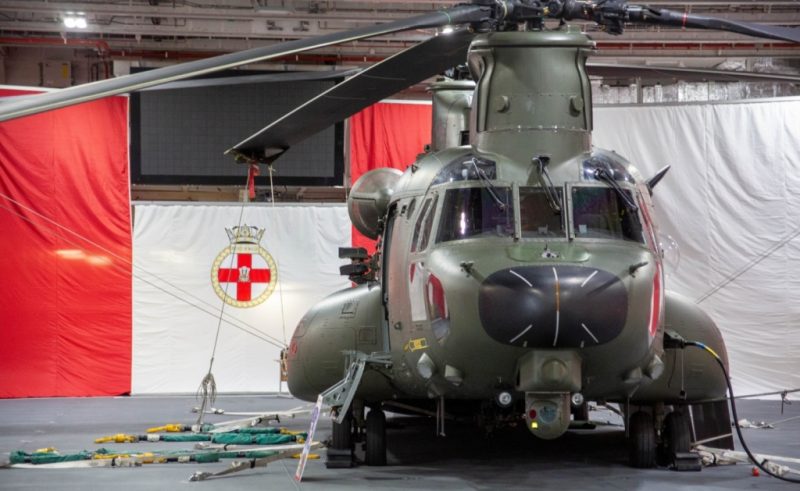
It was thought that by then dozens of F-35Bs would be in the UK inventory, with 12 aircraft allocated to 617 Squadron and 12 with 809 Naval Air Squadron (809 NAS). That latter was to stand up in 2023. The Operational Conversion Unit (207 Squadron) would have 12 aircraft, with a further three British F-35Bs at Edwards Air Force Base (AFB) in the USA, with the Operational Test and Evaluation Unit (17 Squadron). It is planned that the third and fourth operational squadrons will be stood up in 2030 and 2034, respectively, the first with the RAF and the second an FAA unit.
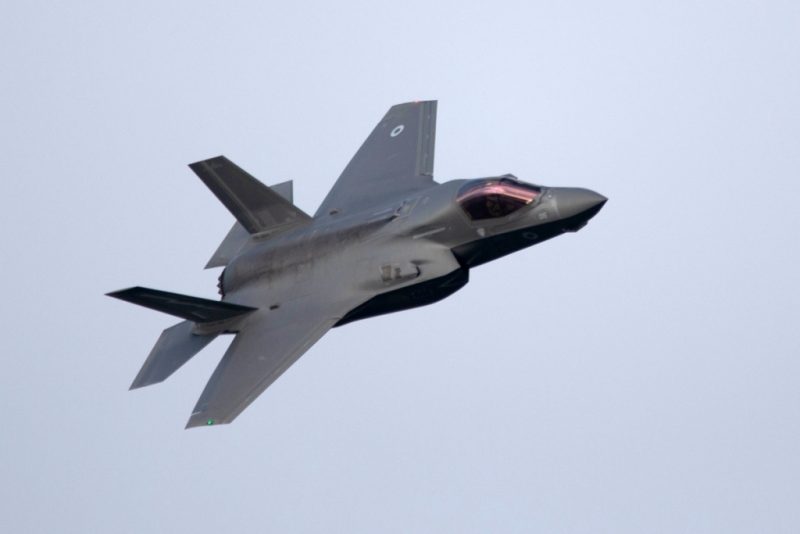

-
To read the full story of the visit by HMS Prince of Wales to the Mersey and see a spectacular set of photographs, get this magazine direct (either hard copy or digital) from our webshop

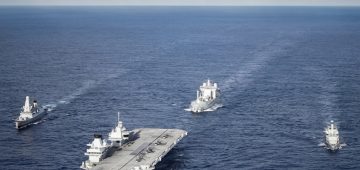



Comments
Sorry, comments are closed for this item